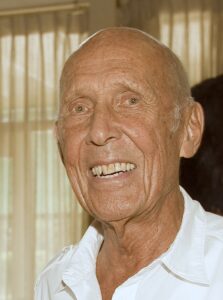Entombed Warriors
In 1974, three farmers digging a well in a field near Xi’an found fragments of the first, life-sized terracotta warrior. This was perhaps the greatest archaeological discovery of the 20th century. Around 6,000 more entombed warriors have been unearthed in three different areas, along with their horses, chariots and weapons. The discovery of the entombed warriors made the myth of Emperor Qin Shi Huangdi’s (259-210BC) mausoleum a reality. Apparently Qin was buried with a complete set of household servants, concubines, workers and imperial artisans, but the real army could not be spared. So instead, he ordered that a massive clay army be created to guard his tomb and accompany him to the afterlife.
Ancient Army
Archaeologists think that real life soldiers of the Qin Dynasty were used to pose for the terracotta warriors, because each has his own personal character. Each clay warrior has intense eyes, with yellowish brown-irises and black pupils. The heights of the sculptures vary according to rank. Normal soldiers are about 5’8” tall, charioteers are around 6’2” and commanders stand at about 6’5”.
The bodies of the clay warriors were made and fired separately from the heads. Heads were sculptured by craftsmen, who added individual hairstyles and facial features using clay veneer. Traces of brightly coloured paint have been found on a handful of warriors, persuading archaeologists that all the soldiers were at one time brightly painted. The horses stand 1.5m high. They were cast in one piece except for the tail, which was added later. The bronze weapons were coated with a special chemical to prevent corrosion, and many have been found in mint condition.
Each figurine, weighing around half a tonne, was carried by horse and cart from the kilns several kilometres away. They were maneuvered down the steeply sloping trench access ramps and arranged in military formation, ready for battle.
Qin’s Mausoleum
The Emperor’s mausoleum is thought to be located beneath a topless pyramid 1.5 kilometres west of the warriors. The underground palace was supposedly built to resemble a miniature model of the empire, complete with mountains, valleys, rivers and lakes of mercury. It is said that the ceiling of the mausoleum was inlaid with pearls and precious gems to emulate star patterns in the sky. The body of the Emperor may have been clothed in a suit of everlasting jade. There were booby traps, concealed pits and self-closing doors to deter intruders. The mausoleum and accompanying burial grounds cover 56.25 square kilometres.
Further Information
Army of Terracotta Warriors
Near Xi’an, Shaanxi Province
Admission: Y65
Open: 8.30am-5.30pm daily
Tomb of Emperor Qin Shi Huangdi
Admission: Y26
Open: 7am-6pm daily



